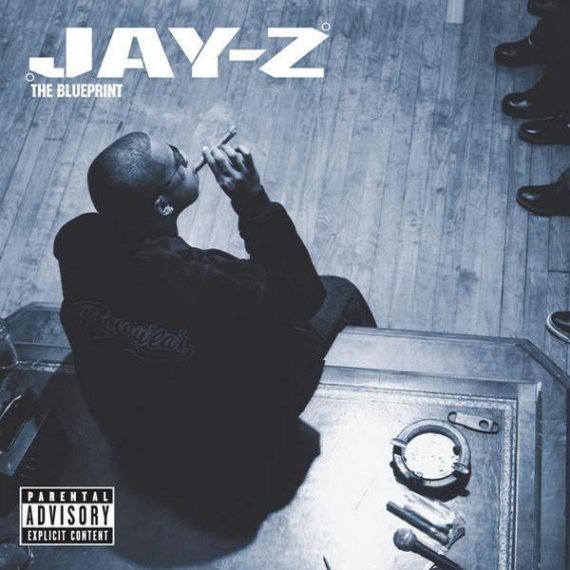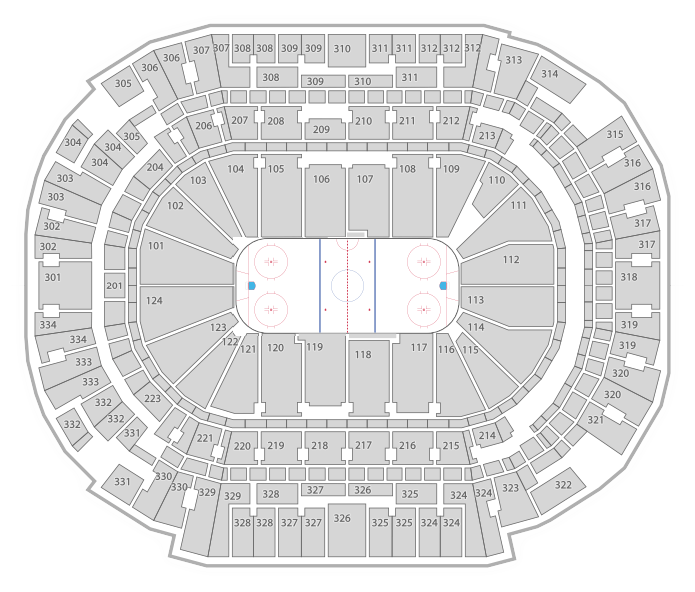Jay Z, along with Puff Daddy and Dr. Dre, is one of the few modern icons in hip hop to whom the phrase "it's bigger than the music" applies. Despite releasing several classic albums, Jay's legacy as one of the genre's greats now has his far-reaching entrepreneurship to thank, maybe even more so than anything he's ever rapped. At this point, Hova's visibility and omnipresence give him all he needs to succeed, but in 2001, he was still one MC competing amid a sea of '90s greats, radio kings and battle-tested rappers in New York City. More so than any of his other albums, The Blueprint separated Jay Z from the playing field. After this, the rest is history.
The first thing that people normally bring up when speaking retrospectively about The Blueprint is the unfortunate coincidence that befell its release date. We shouldn't even have to mention September 11th, 2001 in the same breath as one of the best hip hop albums NYC's ever produced, but unfortunately, we do. Pushed up a week (yes, it's crazy to imagine a world wherein rap albums were more commonly rushed to release than delayed) to combat piracy, The Blueprint's release missed out on being the biggest event in the city thanks to one of the largest tragedies that's ever occurred on US soil. For more on the album's connection to the disaster, check out an article published by CNN ten years later.
I'm not using the term "biggest event" lightly here -- by all hip hop standards, the album was an instant classic. In those days, the three pillars of hip hop criticism (The Source, XXL and Vibe) were all still standing strong, and all gave The Blueprint a perfect score, whether that was five out of five mics, or an "XXL" rating. How did this happen? Just listen to the first 30 seconds of album opener "The Ruler's Back." With vibrant live instrumentation that recalls Superfly, Shaft, or any of the other landmark musical achievements of the blaxploitation era, the song almost Heimlich-maneuvers the term "classic" out of your mouth before Jay gets a chance to utter anything more than "that 'uh huh' thing Jay Z does in all his songs."
At this point in hip hop, sampling was just starting to become passé in favor of the Dr. Dre / 50 Cent / Aftermath sound that you can actually hear on the Eminem-produced "Renegade" on The Blueprint. What The Blueprint did to win over listeners of all age groups was blend live instrumentation with both slick, new-school production and old-school samples. Bringing together the production dream team of Just Blaze, Bink and a Kanye West who was just coming into his own, Jay had assembled beatmakers who were all almost paradoxically both cutting edge and traditionalist in their sounds.
Seamlessly blending the synthetic and the organic was the name of the game, especially on "U Don't Know," the album's shit-talking centerpiece. Upping the pitch on a Bobby Byrd song and pairing it with some truly pummeling, cymbal-heavy production, Just Blaze was clearly in the period of his career during which he could make McLovin sound like DMX, all on the strength of beats that seem to summon up vast reserves of testosterone. But in 2001, Jay was no McLovin. He was a crime-embattled MC who had been bruised and battered in various beefs for years prior, and on a Just Blaze beat, he finally found words powerful enough to give his brand of pusherman-rap a mission statement: "I sell ice in the winter, I sell fire in hell / I am a hustler baby, I'll sell water to a well." Along with monetary boasts that now ring truer in the age of Jay Z* (*Brought to you by Samsung), Jay's monstrous performance on "U Don't Know" is enough to make every cent-centric line on Magna Carta Holy Grail ring hollow in its wake.
Another song on The Blueprint casts particularly sharp relief on Jay's current "Twerk, twerk, Miley, Miley, twerk, twerk"-era of half-assed lyricism. That's "Takeover," the song that devotes one verse each to taking down Prodigy and Nas, two of Jay's biggest critics in that day and age. Taking shots as personal as calling out Prodigy's childhood passion for ballet and Nas' modeling stint, Jay redefined just how vicious diss tracks could be without escalating to violence. Over a boozy sample of The Doors' "Five To One," chopped up by Mr. West himself, Hova set the record straight on NYC's hip hop hierarchy, and it hasn't changed since.
Jay Z's status as the "King of New York" wasn't made entirely by The Blueprint, but think of it as the final round of beheadings that needed to take place before he ascended to the throne. It gave him a hit single ("Izzo [H.O.V.A.]"), his fourth consecutive number one album, some metaphorical nails in the coffins of several beefs, nearly universal acclaim from critics, and an unprecedented fan base. The rest of Jay's rise to the top of the hip hop heap can be more attributed to savvy marketing and business-minded maneuvering than music (though The Black Album was admittedly a smash hit), but The Blueprint was the springboard off of which Jay launched himself from street rap into a future of hobnobbing with presidents, legally traveling to Cuba and managing the careers of athletes. Maybe sometime in the future, he'll flip off the lyrical autopilot switch and make something this classic again. But if you were him, wouldn't you feel that rapping about the immensity of everything you've earned was enough?












![image for article "Lucky You" - Eminem ft Joyner Lucas [Music Video]](/img/resize/411x300/wp-content/uploads/eminem-lucky-you-video-918.jpg)
